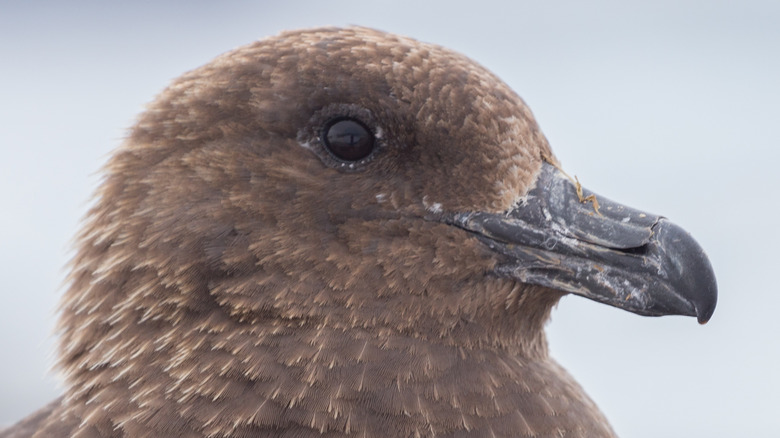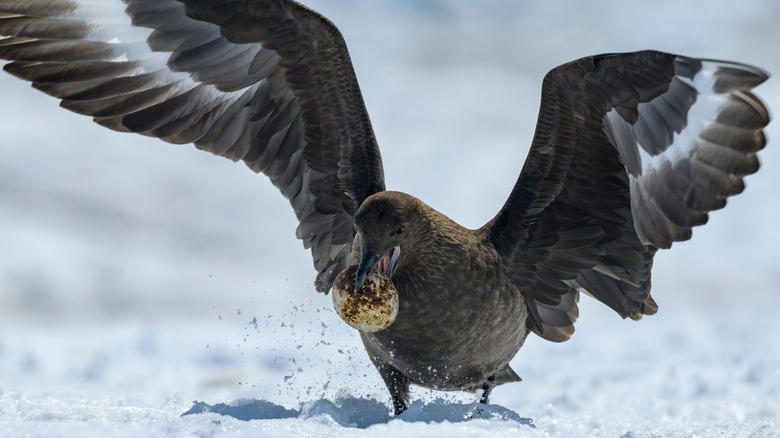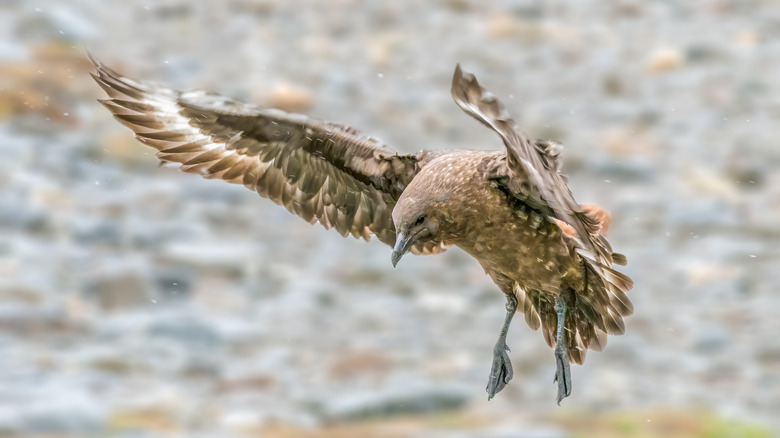Here's How Brown Skua Birds Identify The Scientists That Study Them
Birds have many talents that show their intelligence. Crows have been shown to be able to solve problems, use tools, and even count, according to Wingspan Optics. Macaws and parrots can have personalities as vibrant as their plumage, mimicking the language of their owners in whatever language they speak. Pigeons in Japan have mastered the ability to distinguish between Pablo Picasso's cubist style and Claude Monet's impressionism, according to the Journal of the Experimental Analysis of Behavior, a paper by Shigeru Watanabe, Junko Sakamoto, and Masumi Wakita.
Human beings have used birds to communicate and aid them for centuries, with people sending carrier pigeons to deliver messages in war times, miners sending canaries in the coal mine to check for hazardous gas leaks before they ventured underground, and African honey hunters following birds and not bees to find food, as NPR notes. But, one bird species in Antarctica uses its avian intelligence to identify the scientists that study it, and it isn't as forthcoming to let them close as some parrots, crows, and pigeons.
Fierceness in the frozen continent
Brown skuas, which look like seagulls that have been hitting the gym, are predatory birds that mostly feed on eggs and penguin chicks, according to the Biodiversity.AQ. Living in the South Pole, brown skuas are very territorial, with male and female partners alternating patrol duty around their nests once they have burrowed their eggs in the rocky ground, per Oceanwide Expeditions. The brown skuas' main threat is other brown skuas. According to WBUR, this species of bird commonly robs food from neighboring birds and has even been shown to swoop in and steal breast milk from elephant seals.
Although this bird's population is relatively stable, they exist in numbers in these remote corners of the world between 10,000 and 20,000, (via Biodiversity.AQ). To make sure those numbers stay stable with all of the bizarre climate change side effects, scientists track the skuas to determine their territorial ranges. But first, that requires getting close enough to their nests to tag them, and then returning to the birds' nests to remove the tag with all the data on it (via Oceanwide Expeditions). Therein lies the problem with these fierce flyers.
'I had to defend myself'
When some of these researchers visited the brown skuas' nests, the birds sounded the alarm — literally making a screeching caw that alerted their partner to an intruder. Then, both parents attacked the scientists, "pecking at the head and face, grabbing clothing, and dive-bombing," per Oceanwide Expeditions. "I had to defend myself against the skuas' attack," one of the researchers named Yeong-Deok Han told WBUR.
However, some researchers noticed that the birds seemed to notice if it was a different person that returned to the nest the second time to remove the tracking device. In a study published in Animal Cognition, the scientists wrote about their experiment that determined if the birds really were remembering individual human beings.
What they found was that when a neutral human who the birds had never met approached the nest at the same time as the researcher who had been there before, seven out of seven birds in the experiment followed the nest intruder — even when they wore different clothes (via Animal Cognition). It's a cautionary tale for researchers: These birds don't forget.


